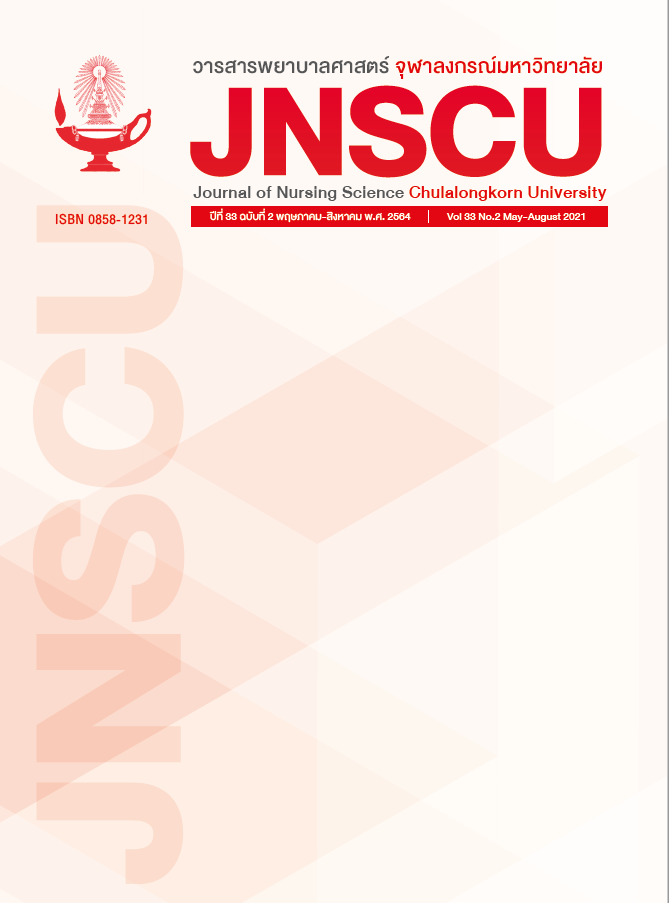The Effect of Negative Symptoms Management Program on Functioning of Patients with Chronic Schizophrenia
Keywords:
Chronic Schizophrenia, Negative Symptoms Management Program, FunctioningAbstract
Purpose: 1) To compare the functioning of patients with chronic schizophrenia before and after receiving the negative symptoms management program and, 2) To compare the functioning of patients with chronic schizophrenia who received negative symptoms management programs and those who received regular nursing care activities.
Design: Quasi-experimental research
Methods: The research sample consisted forty of patients with chronic schizophrenia who received services in the in-patient department, Somdet Chao Phraya institute of psychiatry, selected by inclusion criteria, were matched pairs by sex and duration of illness and then randomly assigned to an experimental group and a control group, 20 subjects in each group. The experimental group received the negative symptoms management program composed of 7 group activities for 3 weeks. The control group received regular nursing care activities. The experimental instrument is the Negative Symptoms Management Program. Data were collected using the Life Skill Profile and the negative symptoms subscale of the positive and negative syndrome Scale. Their CVI were .92 and 1, respectively. Their Cronbach’s Alpha coefficients were .88 and .85, respectively. The t-test was used in data analysis.
Findings: 1) The mean score of functioning of patients with chronic schizophrenia who received the negative symptoms management program was significantly higher than those before, at p .05 level; 2) The mean score of functioning of patients with chronic schizophrenia who received the negative symptoms management program was significantly higher than those who received regular nursing care activities, at p .05 level
Conclusion: The result of this study support that the negative symptoms management program can increase the functioning among patient with chronic schizophrenia.
Downloads
Published
Issue
Section
License

This work is licensed under a Creative Commons Attribution-NonCommercial-NoDerivatives 4.0 International License.
ลิขสิทธิ์ของบทความที่ตีพิมพ์เป็นของวารสารพยาบาลศาสตร์ จุฬาลงกรณ์มหาวิทยาลัย ทั้งฉบับตีพิมพ์เป็นรูปเล่มและเอกสารออนไลน์

